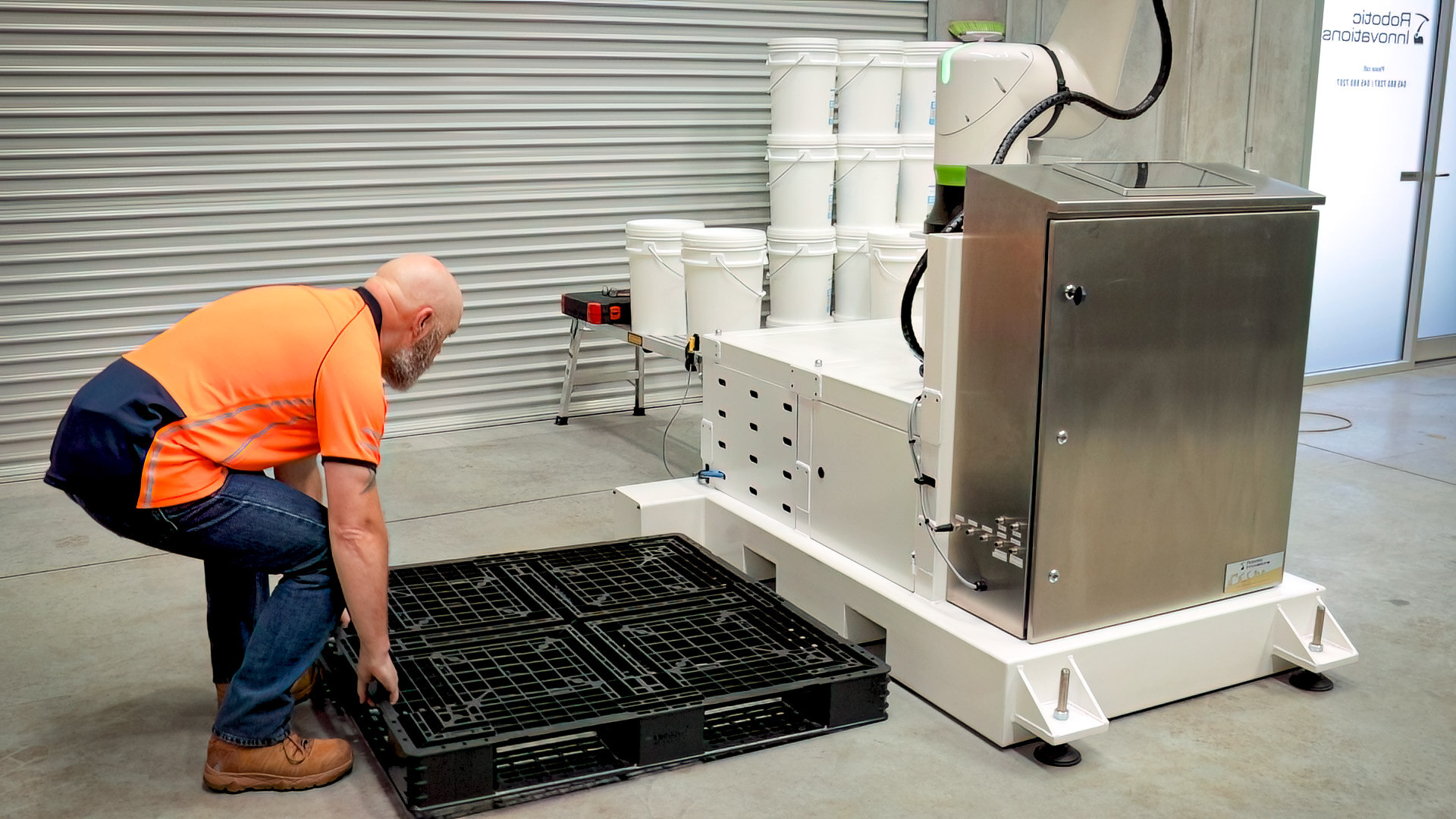Visual Work Instructions: The Future of Manufacturing

May 30, 2025

Fast-paced and precision-driven—these are some of the expectations in today’s manufacturing environments where clear communication has become non-negotiable. Enter Visual Work Instructions (VWIs)—a smarter, faster, and more effective way to guide workers through complex processes. Unlike traditional instruction manuals filled with dense text,
VWIs rely on images, videos, and streamlined language to deliver step-by-step guidance designed in such a way that anyone can follow.
This guide explores why VWIs are revolutionising the shop floor, particularly in manufacturing settings. We'll break down what VWIs are, why they matter, the specific benefits they bring to manufacturing, and how digital platforms like Knowby help businesses build, scale, and update them with ease.
What Are Visual Work Instructions?
Visual work instructions are task-specific guides that use images, videos, and concise text to show workers exactly how to perform a task. Think of them as a more focused and user-friendly version of a digital instruction manual or traditional work instruction sheet.
Where a text-heavy manual might include several paragraphs for a single task, a VWI shows a short video clip or annotated image, allowing the user to understand the task at a glance. This method improves comprehension and reduces the chance of misinterpretation—a critical advantage in time-sensitive or safety-critical environments.
Knowby excels in this area by enabling users to create and share multimedia-rich instructions that are easy to update and access. With Knowby, teams can replace outdated PDFs or paper-based SOPs with short, clear, and visual guides that align with how people actually learn and work.
What our clients say about Knowby 🚀

The step-by-step instructions format is very easy for warehouse workers to follow. They can select a particular point in the process if they need to.
Tom Field
Founder, Bearhug Reusable Pallet Wraps

Knowby instructions are so easy to use, so well structured, easy to look through. They really simplify things
Aaron
Bronco Built

It [Knowby instructions] is especially good for teams with varying literacy issues or multi-lingual workforce where English isn’t their first language.
Gavin Kenny
Head of Health & Safety
Key Benefits of Visual Work Instructions
Visual work instructions are more than just a training tool—they’re a strategic asset for operational excellence. By transforming static, text-heavy documents into dynamic, easy-to-follow visual guides, VWIs help frontline workers do their best work—faster, safer, and with greater confidence. From improved learning retention to real-time process updates, the benefits of VWIs ripple across every part of a business. Here’s a closer look at why they’re so valuable, especially in manufacturing environments.
Enhanced Learning and Retention
It is often believed that people retain around 80% of what they see and do, compared to about 20% of what they read. That said, combining text and visuals is generally supported by science as an effective way to improve understanding and recall, as it engages multiple cognitive pathways. VWIs tap into this powerful learning method by combining short-form video, annotated images, and hands-on action to help workers absorb and retain knowledge more effectively. This is particularly important in manufacturing, where procedural clarity directly impacts product quality and safety.
By using Knowby’s video-driven “Know-How” format, teams can reinforce knowledge through repeated visual exposure—so even if workers only watch a video once or twice, they’re more likely to remember each step correctly.
Improved Accuracy and Efficiency
When instructions are unclear, even experienced workers may make avoidable mistakes. VWIs remove the ambiguity by showing exactly what needs to be done and how to do it. Visual cues, such as close-up photos or brief demonstrations, eliminate second-guessing and reduce reliance on supervisors for clarification.
This clarity directly translates into improved task efficiency. Workers complete jobs faster and more confidently—minimising costly errors, rework, or delays. Knowby’s commercial customers have reported noticeable gains in quality assurance when switching from outdated instruction formats, such as written instructions, to visual-first workflows.
Streamlined Training for Diverse Teams
Many manufacturing floors today are staffed by multilingual or cross-generational teams, and not everyone learns the same way. VWIs cater to a wide range of learners by removing language barriers and reducing reliance on heavy reading.
Instead of long paragraphs or technical jargon, instructions are shown through demonstration. This visual-first approach shortens onboarding times for new hires and helps temporary or contract workers get up to speed quickly—without extensive classroom training.
Knowby’s visual instruction format has been shown to accelerate training timelines and promote inclusivity by making content accessible for those with varied literacy or language backgrounds.
Real-Time Updates and Version Control
One of the biggest risks in traditional work instruction systems is outdated content. Paper-based SOPs or static PDFs often go unchecked, resulting in inconsistent processes across shifts or teams.
VWIs hosted on platforms like Knowby are dynamic. Instructions can be updated in minutes and instantly distributed across teams and devices. This ensures that everyone, from veteran operators to new trainees, is working from the same, most current version—reducing process drift and supporting standardisation at scale.
Safety and Compliance Support
Clear, visual instructions are easier to follow and more likely to be followed correctly. In regulated industries or safety-critical tasks, this can make the difference between compliance and costly violations.
VWIs help reinforce proper procedures by showing correct actions—not just describing them. Whether it's the correct way to lock out machinery or a hygiene procedure in a food plant, visual guides reduce unsafe shortcuts and ensure steps aren’t missed.
Knowby supports audit trails and consistent version tracking, which helps manufacturers demonstrate compliance and enforce best practices across teams.
Cost Savings
While the initial setup of a visual instruction system may require an investment, the long-term return is substantial. Faster onboarding, reduced errors, better productivity, and fewer training hours all add up to measurable cost savings.
Manufacturers who adopt VWIs typically see fewer production stoppages due to human error, as well as reduced need for rework and quality inspections. And with Knowby, teams save additional time by not having to chase down or recreate documentation—everything is centralised and instantly accessible.
How to Create Effective Visual Work Instructions
A well-designed visual work instruction isn’t just a collection of pictures or video clips—it’s a structured communication tool that bridges the gap between knowledge and performance. To maximise the impact of VWIs, especially in fast-paced manufacturing settings, they need to be intuitive, up to date, and accessible to everyone on the floor. Below are best practices to help teams create visual work instructions that are clear, consistent, and actionable—backed by insights from Knowby’s own experience supporting frontline workers.

1. Tailor Instructions to Skill Levels
Not every team member has the same background or level of technical expertise. A task that’s second nature to a seasoned operator may be confusing to someone new. That’s why it’s essential to customise VWIs based on user needs.
Use simple language and visuals for entry-level roles, and reserve more detailed annotations or supplementary notes for experienced workers. With Knowby, creators can easily version and adapt instructions for different roles—ensuring every worker receives the right level of guidance.
2. Use a Mix of Media
Combining different types of visual aids reinforce understanding in different ways. Short video clips or loop videos are ideal for demonstrating physical actions like tool use or assembly sequences. Annotated photos can highlight safety checks, positioning, or part orientation. Simple and easy to understand words in text provide quick context or warnings.
Knowby supports all of these formats in one seamless interface. You can pair each step of an instruction with a video demo or visual cue, keeping the experience engaging and intuitive—ideal for mobile or tablet use on the floor.
💡 Tip: Keep videos short and maintain focus. If a task requires a longer explanation, break it into multiple bite-sized steps.
Knowby's AI capabilities enables you to transform a video or a PDF document into a step-by-step format.
A practical example of this is how Robotic Innovations created a work instruction on how to use their FANUC CRX-25iA machine, accessed by a QR code displayed on the the machine.
3. Keep It Simple and Focused
Cognitive overload is a real barrier to effective training. Workers are more likely to follow through with instructions when each one is focused and actionable. A good rule of thumb? One instruction = one action.
Break complex workflows into clear, linear steps. Use numbered sequences or visual icons to guide the user through the process. This helps users build confidence, reduces the chance of missed details, and makes troubleshooting easier.
Knowby’s step-by-step visual instruction format encourages this modular approach—so each piece of knowledge is easily digestible and reusable across different workflows.
4. Update Regularly to Reflect Process Changes
Processes evolve, equipment gets replaced, and compliance standards shift. VWIs need to keep pace. Stale or inaccurate instructions don’t just cause confusion—they can lead to unsafe or non-compliant practices.
Digital platforms like Knowby eliminate the hassle of manually updating printed materials. Creators can revise a step, upload a new image, or replace a video, and the update is reflected instantly across all shared instances. This level of control ensures consistency and builds trust among workers who rely on those instructions to do their jobs correctly.
🌐 Pro tip: Set a regular review cadence for all instructions—quarterly or biannually—to check for relevance and accuracy.
5. Combine With Hands-On Training When Needed
Visual instructions are powerful, but they’re not always a complete substitute for experiential learning—especially for safety-critical or highly specialised tasks. Where necessary, VWIs should be integrated into a broader training plan that includes hands-on mentoring or supervised walkthroughs.
For example, you might assign a short Knowby “Know-How” video as pre-work, followed by shadowing or live demonstration with a team lead. This blended approach reinforces learning and helps ensure that theory translates into safe, confident execution.
🔍 For a deeper dive, explore Knowby’s guide on how to create effective work instructions.
How Knowby Helps You Build and Scale VWIs
Creating effective visual work instructions is only half the battle—the real challenge is keeping them up to date, accessible, and consistent across teams, shifts, and sites. That’s where Knowby comes in. Designed for the realities of frontline work, Knowby makes it easy to build, manage, and share VWIs that actually get used. Here’s how the platform supports manufacturing operations at scale:
Multimedia Integration
Knowby lets you embed videos, annotated images, and even voiceovers into each instruction step—no technical background required. This multimedia approach transforms static documents into dynamic learning tools that are easier to follow and more engaging for a diverse workforce.
For example, a step-by-step guide to machine setup can include a short video demo, a labelled photo showing correct alignment, and a voiceover highlighting key items to check—all in one screen.
🎥 Real-World Win: Teams using Knowby report faster onboarding and fewer repeated questions, thanks to rich, visual instructions that speak for themselves.
Mobile-First Access
Knowby is designed with frontline workers in mind. Instructions are optimised for mobile and tablet use, so team members can access exactly what they need, right when they need it—on the production floor, at a workbench, or in the field.
No more searching through binders or booting up a shared desktop. With just a few taps, workers can access up-to-date VWIs on their personal devices or shared tablets, keeping productivity high and downtime low.
📱 Bonus: Offline access means your team can still view instructions even in areas with limited connectivity.
Instant Updates and Version Control
Manufacturing processes change fast—and your instructions need to keep up. Knowby gives creators complete control over instruction updates, so any edits you make go live immediately across the entire team.
Each update is automatically version-controlled, so there’s a clear record of what changed and when. This not only prevents outdated or conflicting information—that is common with traditional written instructions—but also supports compliance with ISO, safety, or internal quality standards.
🔁 Never Again: No more outdated PDFs floating around. Everyone works from the same trusted source.
Fast Creation and Deployment
Knowby’s intuitive interface makes it easy for subject matter experts—not just tech teams—to create visual work instructions quickly. Drag-and-drop tools, reusable templates, and step-by-step builders remove the friction from content creation.
Whether you're building a new SOP or tweaking a single step, you can do it in minutes—not hours or days. And once published, instructions are instantly accessible across your organisation.
🛠️ From Expert to Instruction: Knowby shortens the gap between doing the work and documenting it.
Scalable Across Teams and Sites
Whether you're managing one site or a global network of facilities, Knowby ensures that every team has access to consistent, high-quality instructions. You can replicate best practices across locations, localise content where needed, and maintain a unified knowledge base for your operations.
This scalability is especially valuable for manufacturers aiming to maintain standards while onboarding new staff, adopting new technology, or expanding into new regions.
🌍 Consistency, Everywhere: Knowby helps enforce standardisation while still giving teams the flexibility to adapt as needed.
By simplifying how instructions are created, updated, and shared, Knowby empowers frontline teams to perform at their best. The result? Faster learning, more consistent task execution, fewer errors because everyone is on the same page, and a safer, more agile workforce—exactly what today’s manufacturers need to stay competitive.
Level up work instructions with Knowby
Create simple visual work instructions that employees love to use 🎯
Why Visual Work Instructions Are Critical in Manufacturing
Manufacturing is one of the most demanding industries in terms of precision, consistency, and safety. Small mistakes can lead to costly downtime, product defects, or even serious injury. Traditional work instructions, often buried in binders or stored in hard-to-navigate folders, simply don’t meet the needs of modern manufacturing teams.
Visual work instructions bridge this gap. They provide just-in-time guidance, helping workers follow procedures step by step with visual aids that are easier to understand than blocks of text instructions. In fact, human error accounts for around 23% of unplanned downtime in manufacturing—a problem that VWIs directly help address by reducing ambiguity and reinforcing correct procedures.
In high-mix, low-volume environments or facilities with frequent changeovers, VWIs offer a fast and consistent way to retrain staff or implement new processes. They support workforce flexibility by making it easier to onboard temporary or contract workers without extensive one-on-one training. This is where visual work instructions in manufacturing becomes a game-changer.
Real-World Applications and Examples in Manufacturing (and Other Industries)
Visual work instructions are already making a tangible impact across a range of manufacturing sectors—from improving quality on the production line to supporting after-sales service. Below are just a few examples of how VWIs are helping companies streamline operations, enhance safety, and boost efficiency.
Automotive Assembly Lines
In automotive manufacturing, where speed and precision are critical, VWIs reduce assembly time by breaking down tasks into visual, step-by-step instructions. Teams can easily follow annotated images or short videos, improving first-time-right rates and reducing costly rework.
🚙 See it in action: Bronco Built uses Knowby to deliver clear, customer-facing instructions that protect intellectual property while improving post-sale support.
Pharmaceutical Labs
In environments where regulatory compliance and consistency are non-negotiable, visual work instructions help lab techs follow exact procedures without missing a step. This boosts product integrity and helps meet stringent regulatory standards.
💊 Real-world use: Cotecco uses Knowby to create crystal-clear digital work instructions that not only improve accuracy but also reduce service callouts.
Electronics Manufacturing
For electronics makers dealing with frequent product changes and complex assembly processes, VWIs make it easy to retrain staff quickly and reduce downtime. Step-by-step visuals ensure that even minor variations in builds are clearly communicated.
📲 Example: Robotic Innovations integrated Knowby with QR code-enabled documentation to give technicians immediate access to visual work instructions right at the point of use
Food Processing Plants
Clear and concise visuals can play a critical role in reinforcing hygiene, safety, and sanitation protocols. VWIs help teams follow exact steps for cleaning, allergen handling, or temperature control, reducing the risk of contamination and ensuring food safety compliance.
🍽️ Supporting sales & training: Bearhug uses Knowby to create visual work instructions that streamline both internal training and customer onboarding.
Custom Manufacturing and Niche Builds
For businesses handling bespoke products or one-off builds, visual work instructions simplify SOP creation and make it easy to train new employees—even when every job is a little different.
🛠️ Field-ready support: M2 Overland relies on Knowby to deliver simple, visual SOPs and after-sales instructions, ensuring that their rugged, custom builds are well-supported in the field.
Whether you're standardising high-volume processes or enabling on-the-fly training in dynamic environments, visual work instructions are transforming how manufacturing teams work, learn, and deliver. Knowby’s flexible, mobile-first platform ensures these benefits aren’t theoretical—they’re practical, measurable, and already in use across industries.
The Future of Work Instructions Is Visual
Visual work instructions are no longer a “nice-to-have”—they're essential for manufacturers who want to stay competitive, agile, and efficient. From improving task accuracy and speeding up onboarding to enhancing compliance and safety, VWIs support the everyday realities of modern manufacturing environments.
In a world where frontline teams are expected to do more with less—and do it faster—outdated PDFs and clunky SOPs simply can't keep up. Workers need accessible, easy-to-follow, and visually rich instructions they can trust, whether they're assembling complex machinery, performing routine maintenance, or training new employees.
That’s where Knowby stands out. Purpose-built to simplify knowledge sharing on the shop floor, Knowby empowers teams to:
- Create step-by-step instructions enhanced with images, video, and voice
- Share updates in real time to eliminate outdated information
- Scale knowledge effortlessly across teams, shifts, and sites
If you're ready to reduce errors, speed up training, and bring clarity to every task, it's time to make the shift to visual work instructions.
👉 Explore Knowby and start building smarter instructions that work—wherever work happens.

Comments